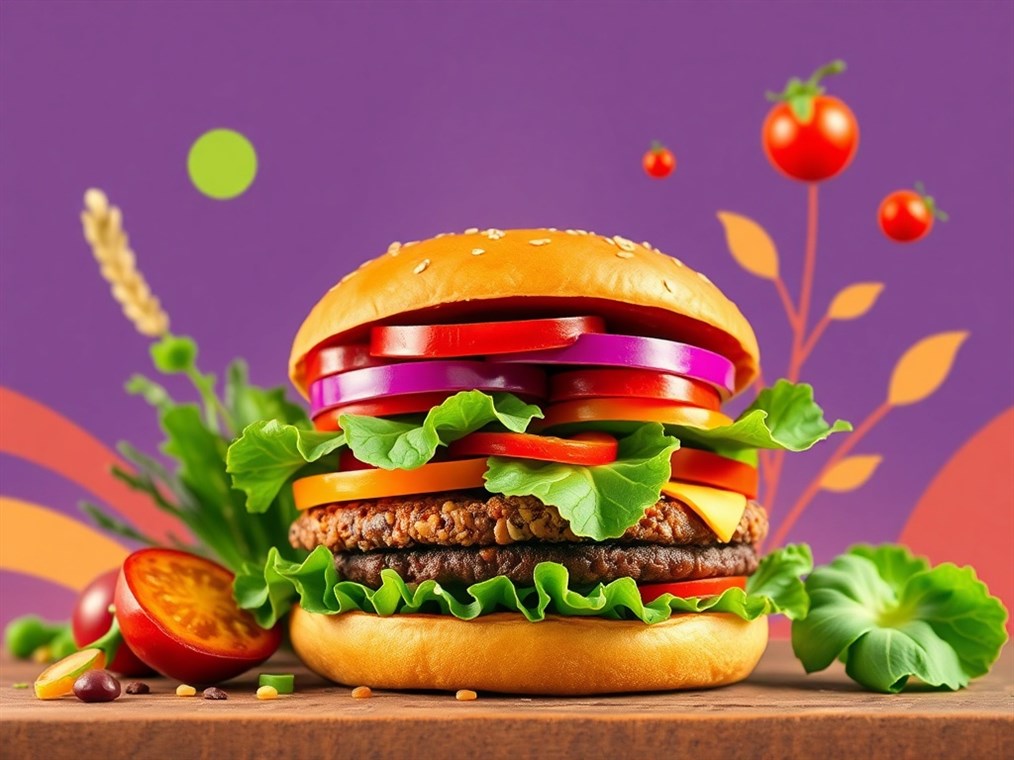Decoding the Impossible Burger: What’s Really in That Plant-Based Patty?
Okay, the Impossible Burger. It’s everywhere, right? Vegans love it, vegetarians are all over it, and even meat-eaters are giving it a shot. The big question is: what exactly are we eating? It’s supposed to be this sustainable, planet-friendly alternative to beef, but what’s in it? Let’s be honest, most of us want to know what we’re putting in our bodies, so let’s pull back the curtain and see what makes this thing tick.
Basically, the Impossible Burger is built on four main things: protein, fat, flavor, and stuff to hold it all together. And get this – it’s all from plants.
First up, protein. The star player here is soy protein concentrate. You’ll also find potato protein in the mix. They used to use wheat protein, but they switched things up to make it gluten-free, which is pretty cool. Soy gives the burger that “meaty bite,” you know, that satisfying chew.
Next, fat. This is where the sizzle comes from. They use a blend of coconut and sunflower oil to mimic the juiciness of a real burger. Now, these oils do make it taste good, but heads up: they also contribute to the saturated fat content. Something to keep in mind.
Then, you need something to hold it all together, right? Enter the binders! The Impossible Burger uses methylcellulose and modified food starch to keep everything in patty form, whether you’re making burgers or meatballs.
And finally, the flavor. This is where things get interesting. You’ve got yeast extract and cultured dextrose doing their thing, but the real magic comes from heme.
Heme: The Secret Sauce (and a Little Bit of Science)
Heme, or soy leghemoglobin to get all science-y, is what gives the Impossible Burger that signature meaty flavor, that aroma that makes your mouth water, and even that “bleeding” effect that freaks some people out but makes others think, “Wow, this is real.”
So, what is heme? It’s basically an iron-containing molecule that’s found in every living thing, plants and animals. In animals, it’s part of hemoglobin, which carries oxygen in your blood. In plants, you find it in leghemoglobin, especially in the roots of soybeans.
The folks at Impossible Foods figured out that heme is the key to those savory flavors we crave when we eat meat. But how do you get enough of it to make a whole bunch of burgers? That’s where the clever part comes in.
They use a genetically engineered yeast to produce heme on a large scale. Basically, they take the DNA from soybean roots and stick it into the yeast. Then, they ferment the yeast, and boom, you’ve got soy leghemoglobin. It’s listed as “soy leghemoglobin” on the ingredients. Because of the genetic engineering, it’s labelled as “soy leghemoglobin (genetically-modified)”.
Okay, Spill the Beans: The Full Ingredient List
Ready for the nitty-gritty? Here’s what actually goes into an Impossible Burger:
- Water
- Soy Protein Concentrate
- Sunflower Oil
- Coconut Oil
- Natural Flavors
- 2% or Less Of:
- Potato Protein
- Methylcellulose
- Cultured Dextrose
- Food Starch Modified
- Yeast Extract
- Dextrose
- Soy Leghemoglobin
- Salt
- Vitamin E (Tocopherols)
- L-Tryptophan
- Soy Protein Isolate
- Vitamins and Minerals: Zinc, Vitamins (B3, B1, B6, B2, and B12)
Numbers Time: The Nutritional Lowdown
So, what are you actually getting, nutritionally? A 4-ounce serving clocks in at around 240 calories. Here’s the breakdown:
- 14g of fat (18% RDA), including 8g of saturated fat (40% RDA)
- 0mg of cholesterol
- 370mg of sodium (16% RDA)
- 9g of carbohydrates (3% RDA)
- 3g of dietary fiber (11% RDA)
- Less than 1g of sugar
- 19g of protein (31% RDA)
- Plus, you get a good dose of calcium, iron, and potassium, and a bunch of B vitamins.
The Impossible Burger has no cholesterol, antibiotics, or animal hormones, and it’s a decent source of fiber, calcium, and potassium. The catch? It’s a little high in saturated fat and sodium, so don’t go overboard.
Is It Safe? The Official Word
Soy leghemoglobin has been put through the wringer with safety tests and has been given the thumbs up by food regulators in the US, Australia, New Zealand, Canada, Singapore, Hong Kong and Macau. They haven’t found any major safety issues. The European Food Safety Authority (EFSA) also agrees that soy leghemoglobin is safe at the levels they’re using it.
The Final Verdict
The Impossible Burger is a pretty impressive piece of food engineering. It uses a bunch of plant-based ingredients to try and recreate the taste and feel of real beef. It’s definitely a more sustainable option than traditional meat, but it’s important to look at the nutrition facts, especially the saturated fat and sodium. Like with anything that’s processed, moderation is key. Knowing what’s in it lets you make smart choices about how it fits into your diet.

